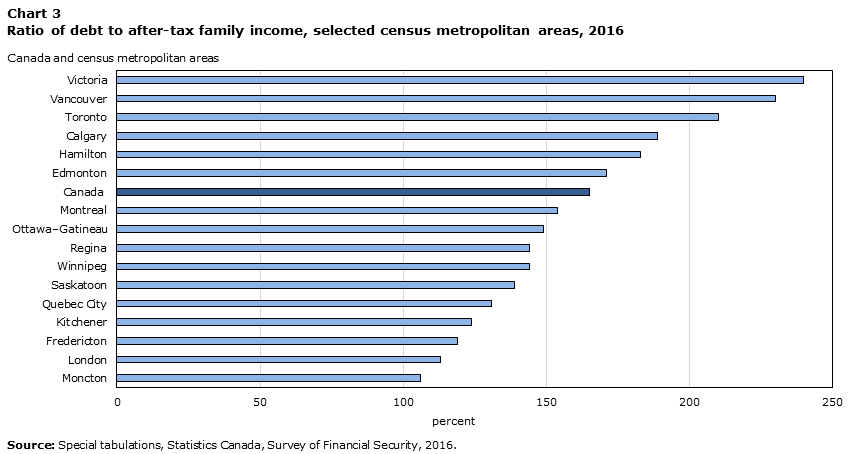Statscan recently reported that from 1999 to 2016, median levels of mortgage debt for Canadians as a whole, rose from $95,400 to $190,000 (measured in 2016 dollars), and the ratio of debt to after-tax family income increased from 94% to 165%. Meanwhile, as shown in the table below, in Toronto (Canada’s most populous city), debt-to-income levels doubled to 210% and went to 230% in Vancouver.

Given the record duration and size of Canadian debt-building over the past decade, in particular, no one should be surprised that Canadian consumer insolvencies began climbing in 2018, and are on pace for double-digit growth in 2019. Hoyes, Michalos consumer solvency expert Scott Terrio explains these trends today in an article here and points out the heightened economic risks as this cycle moves to its natural conclusion. Here’s somes Coles notes:
In recent years, Canadians have proven incredibly resourceful at shifting their debt around, in effect kicking the problem down the road.
As a result, the insolvency industry has gone several years beyond what would otherwise be expected to be a natural systemic purge….
Does this mean that the next (current?) insolvency filing tide will be much higher? I tend to think so, for several reasons.
One, there is a pent-up consumer debt bubble that didn’t really have a full reckoning in a normalized debt cycle a few years ago…
Two, almost every study shows very little savings in the hands of Canadians. They have no cushion, no room to maneuver…
Three, much of the asset base is illiquid. Tough to just up and sell your home in an expensive housing market…
Four, young people are in deep. They are now the fastest-growing debt accumulators and insolvency filers. Our ‘next generation’ is behind the 8-ball financially. And with the student loan burden getting worse, it’s not a stretch to think many Canadians entering their 40’s – which would traditionally be the start of their highest-earning years – will be making ends meet for a decade or so with underemployment rampant…
All in all, I believe the credit correction is inevitable and it’s not a good scenario for a gentle landing.

